Tuning-Capture Plus
Cost effective 4-channel measurement software for loudspeaker system tuning
Tuning-Capture+ Plus added three main features:
- Supports four channel audio interface, three measurement positions can be captured.
- Transfer Function, for those who are used to tune in real time.
- Room resonance detection.
Transfer Function
Tuning-Capture Plus measures time domain and frequency domain simultaneously. Measurements can be made using program material (music, speech, noise or chirp), before or during a performance, with the audience present.
Tuning-Capture Plus uses threaded computing to acquire impulse responses between 0.35 to 11 seconds, and then applies suitably large FFTs to display time domain and frequency domain data at a maximum 23.4 frames-per-second refresh rate. Advanced complex averaging is used in both domains, taking the coherence and phase stability into account. The default resolution is 96 points per octave with a resolution of up to 192 points per octave available.
An Analyzer plug is embedded for transfer of measurement traces to third part DSP control software over LAN. Lake, Apex and more processors are supported.
Room Mode finder
Automatic Room Mode finder with automatic calculation of parametric EQ that can be used to remedy dominant room modes or for optimization of installed Helmholz resonators.
Delay aligner
This is the quick way to fine-tune the levels and delay between bands in a multi-way active system.
The Delay Aligner offers an intuitive graphical aid for delay alignment with synchronized time and frequency graphs. A range of useful curves can be displayed such as Impulse response, ETC or Cepstrum in the time domain. In the frequency domain both group-delay and wrapped phase can be chosen, depending on the preferred alignment strategy.
The Delay Aligner also offers two automatic delay finder algorithms.
MultiWin
Sophisticated windowing functions allow the user to window out room reflections and focus on either equalizing the direct sound while retaining low frequency resolution or spatial averaging of the room transfer function.
Pseudo Averaging
Tuning-Capture Plus also supports Pseudo Power Averaging, which recreates an average of the time response. PPA allows the user to perform a series of measurements throughout the coverage pattern of the sound reinforcement system and base system EQ on the weighted, spatially-averaged response.
Equalizer simulator
Any captured transfer function can be used in the equalizer simulator. EQ parameters can be manually tuned using a convenient graphical user interface and the complex sum can easily be tuned to fit the target response. A list of created filters can be transferred to a DSP device or the resulting filters can be listened to or used as stimulus EQ.
Listen to filters
You can use your PC’s multimedia core to run up to 256 parametric filters or any biquads (shelving, x-over filters, allpass etc.) through your soundcard. You can listen to .WAV files from your hard-drive or assign an input of the soundcard to feed the filters with any program material. You can measure with the filters applied on the stimulus, so you can check your filter setup on and off axis for example.
RTA and Spectrograph
Choice of both the fast FFT fractional octave RTA and the more accurate band pass RTA. RTA and Spectrograph are running in the same window with 1/1 to 1/48 octave resolution.
A novel Dynamic Difference RTA shows the power transfer function between the channels.
SPL and LEQ Meter
SPL metering according to IEC 61672 standard.
Built-in weighting filters: A, C and Z (flat)
Selectable time response; Slow (1s) / Fast (0.125s)
Instantaneous SPL Metering (RMS and Peak)
Five different Equivalent Continuous SPL, Leq, are calculated simultaneously; Continuous, Current, Two Short time (User defined time) and Remaining Leq.
Histogram for the short time Leq.
Benefits
• PC-based loudspeaker or sound reinforcement system measurements
• Transfer function with up to 3 channels captured simultaneously
• Room mode detection
• Convenient, powerful measurement and optimization tool for the sound reinforcement system installer
• Multiple measurements can be taken at several measurement locations and averaged
• Parametric equalizer simulator.
• Listen to the defined filters.
• Delay alignment tab where you can find the delay needed to align subs with full-range speakers.
• Filter parameters can be edited graphically
Features
• Acquires complex frequency response
• Log Sine Sweep (Chirp) and stimulus independent Transfer Function.
• Import text-files from Audio-Capture, Clio, MLSSA (frequency and impulse response)
• Variety of output formats for direct transfer to most common digital loudspeaker processors
• Built-in frequency response and microphone compensator
• Support for any full duplex stereo soundcard or multi-channel soundcard
• RTA and Spectrograph with up to 48 points per octave.
• SPL and Leq Meter with histogram and remaining Leq display
• Spectrum Analyzer with distortion analyzer.
• Function Generator.
Requirements:
• PC with Win7 to Win10. 32 or 64bits
• CPU: Intel i3 or better. Two or more cores.
• RAM: 4 GB min.
• Display: minimum 1024 x 768 pixels.
• Soundcard: Windows compatible (Wave/WDM or ASIO with 2 or 4 inputs and outputs, 24-bit/44.1k to 24bit/192k sampling, with full duplex (simultaneous play and record) capability.
• 1024 samples is the minimum required buffer size.
Download: Tuning-Capture Plus PDF Brochure
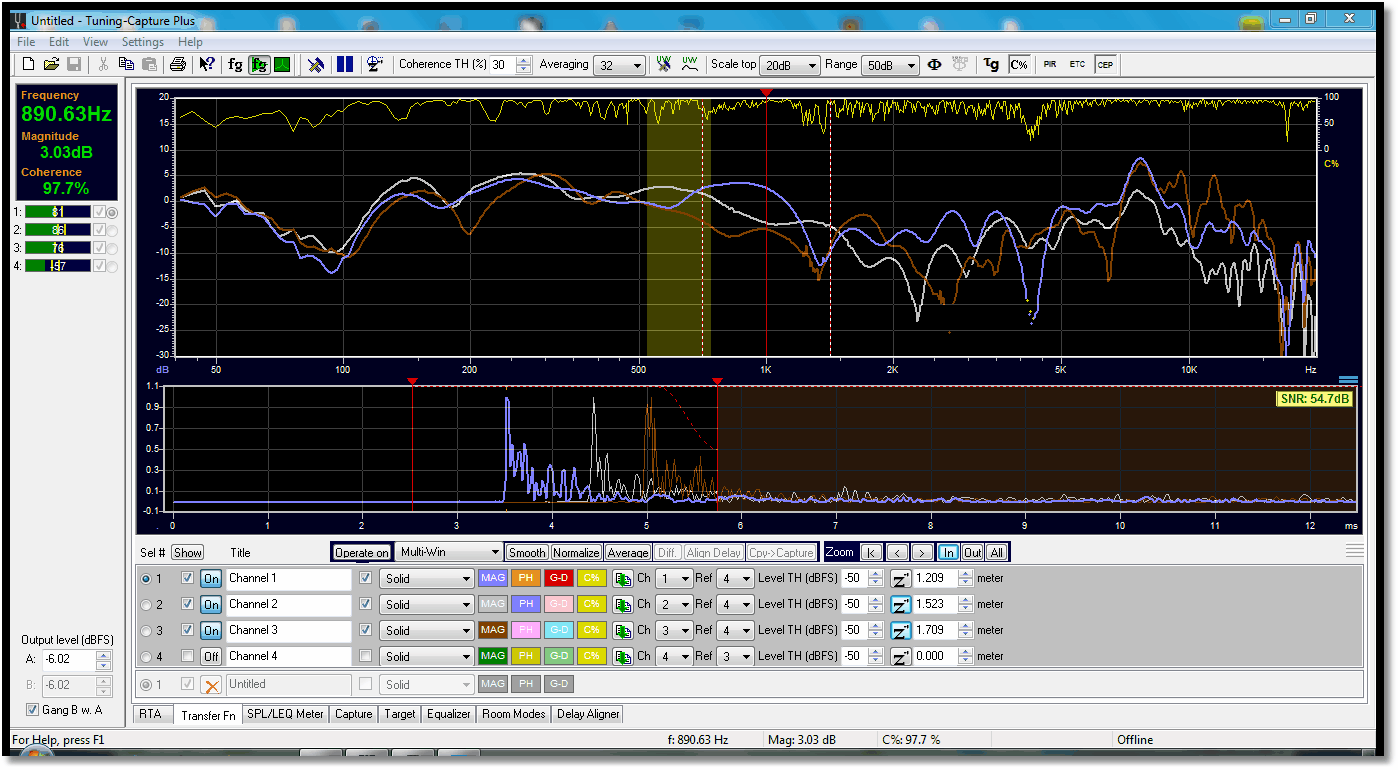
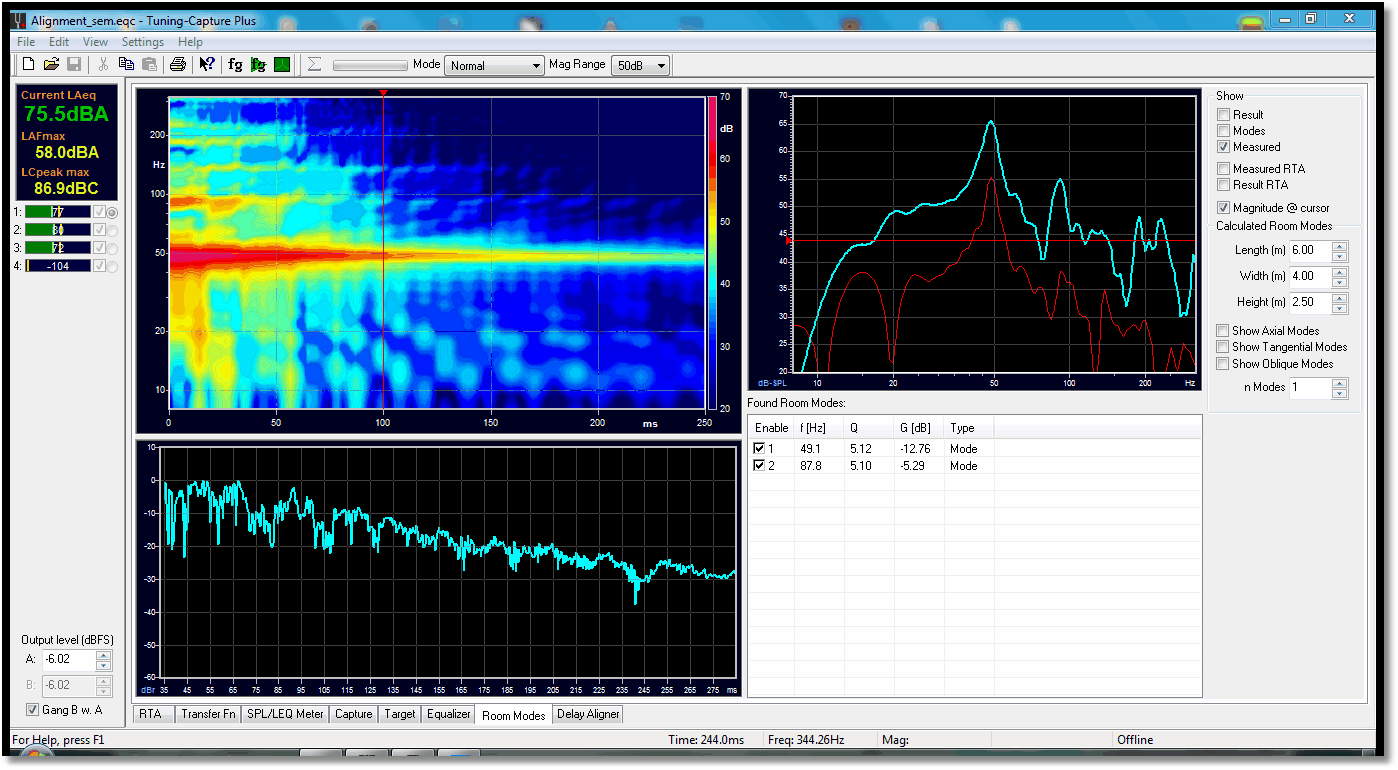
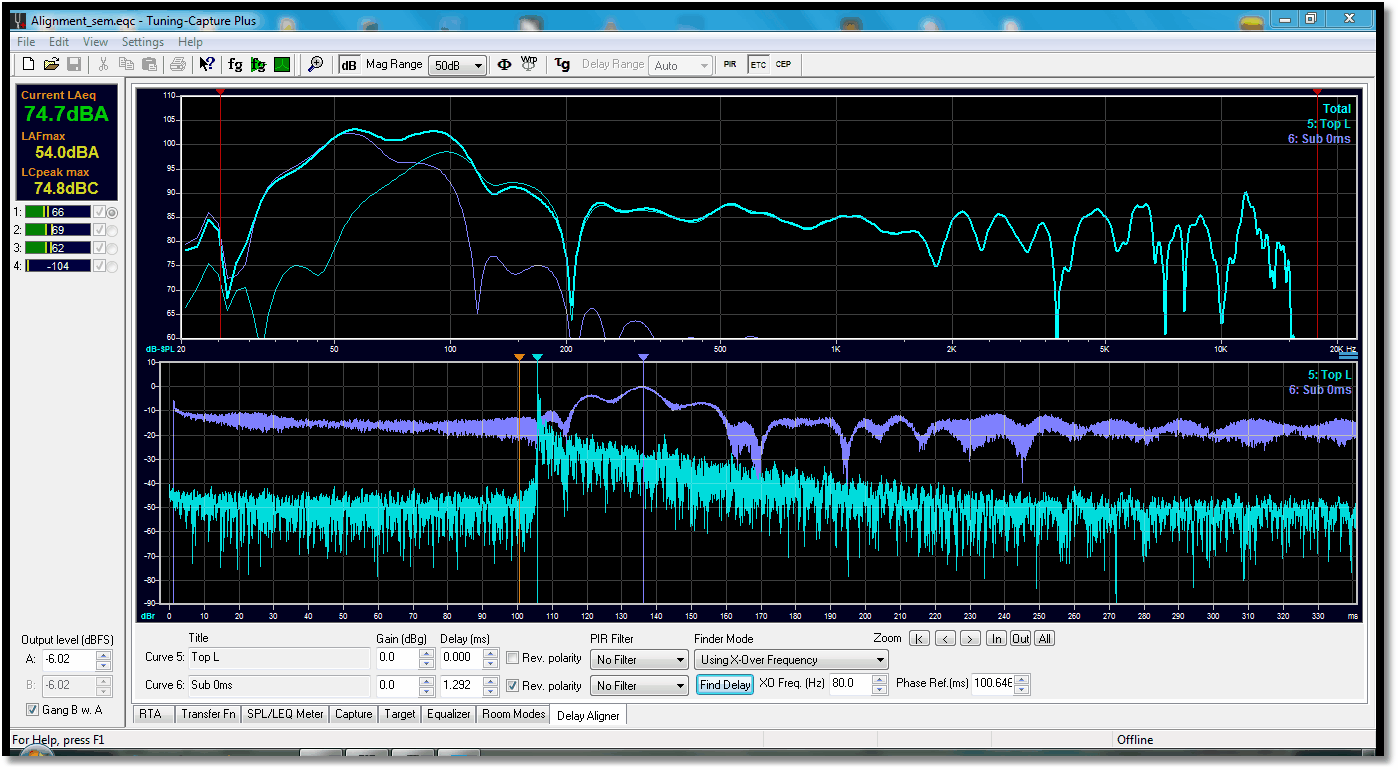
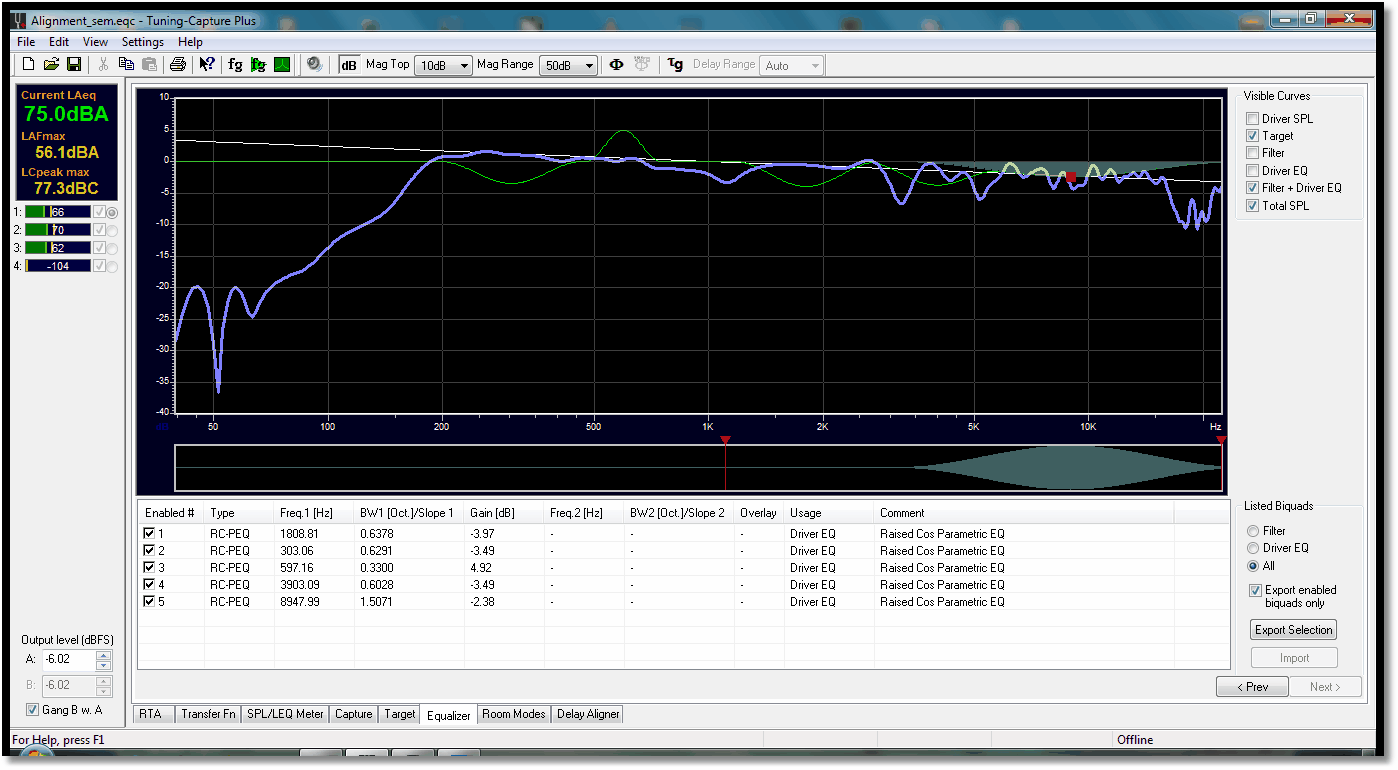
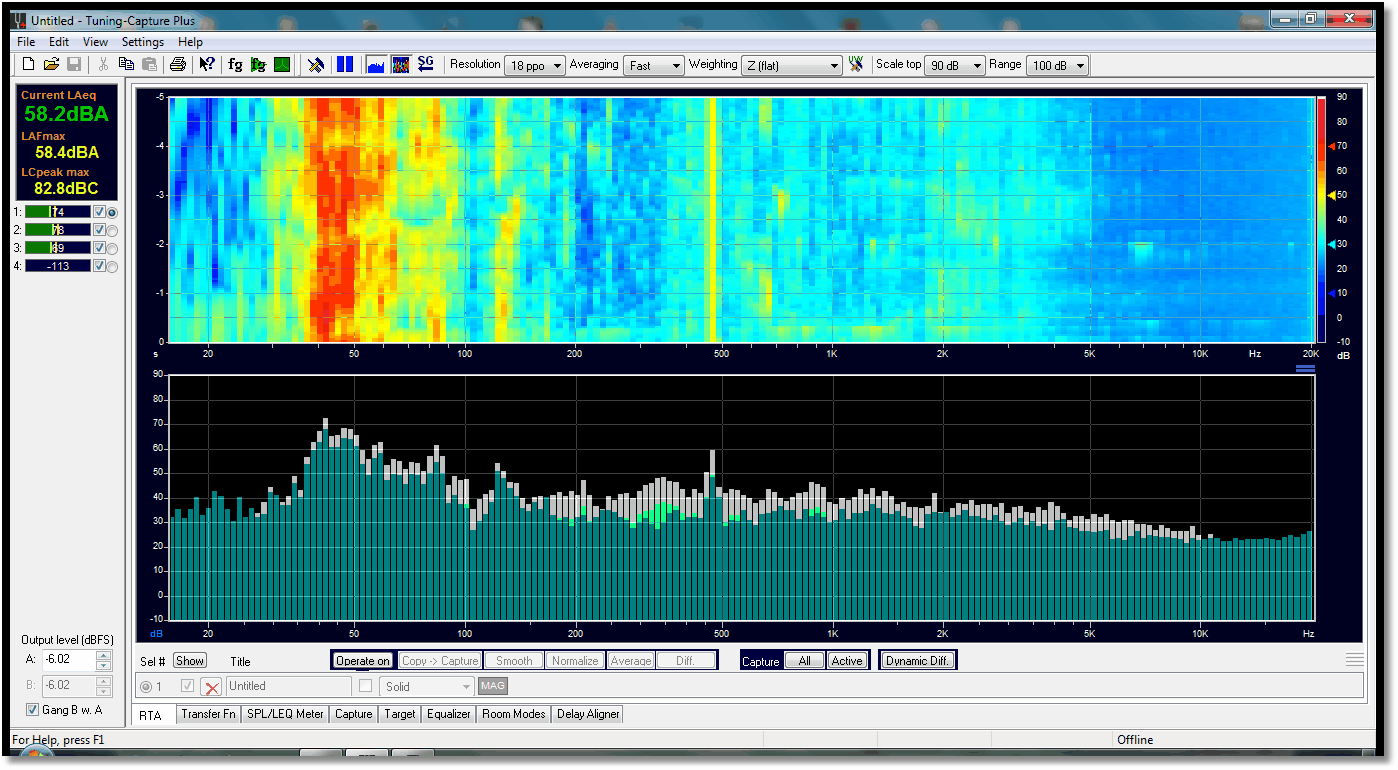
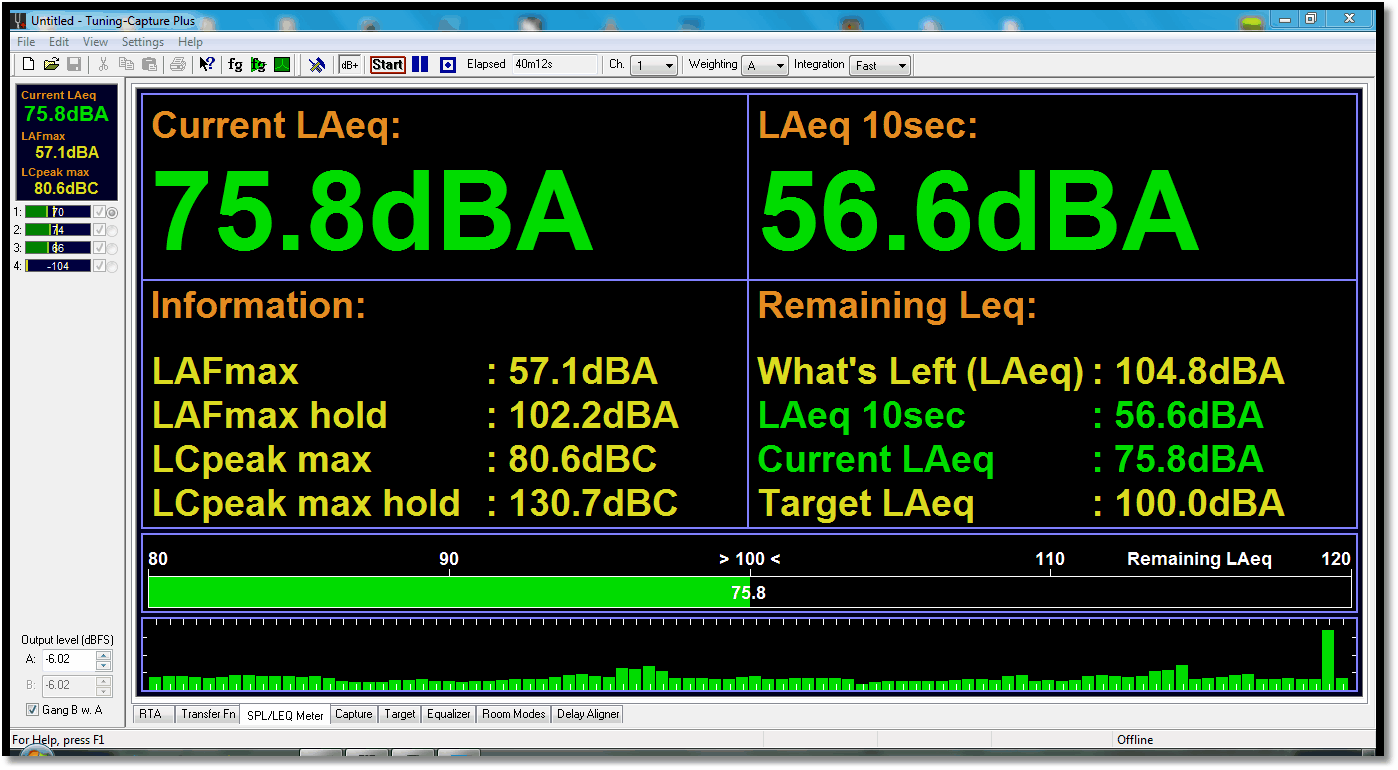
Copyright
Tuning-Capture Plus, FIR-Capture, Quality-Capture, Tuning-Capture, RT-Capture, Room-Capture, WaveCapture and their logos are trademarks of GSW and 7dbm Electronics AB, Sweden. Copyright 2006-2017 GSW and 7dbm Electronics AB. All rights reserved. This product is protected by Swedish and International copyright and other intellectual property laws and international treaties. Unauthorized use, distribution or duplication of this product is strictly prohibited.